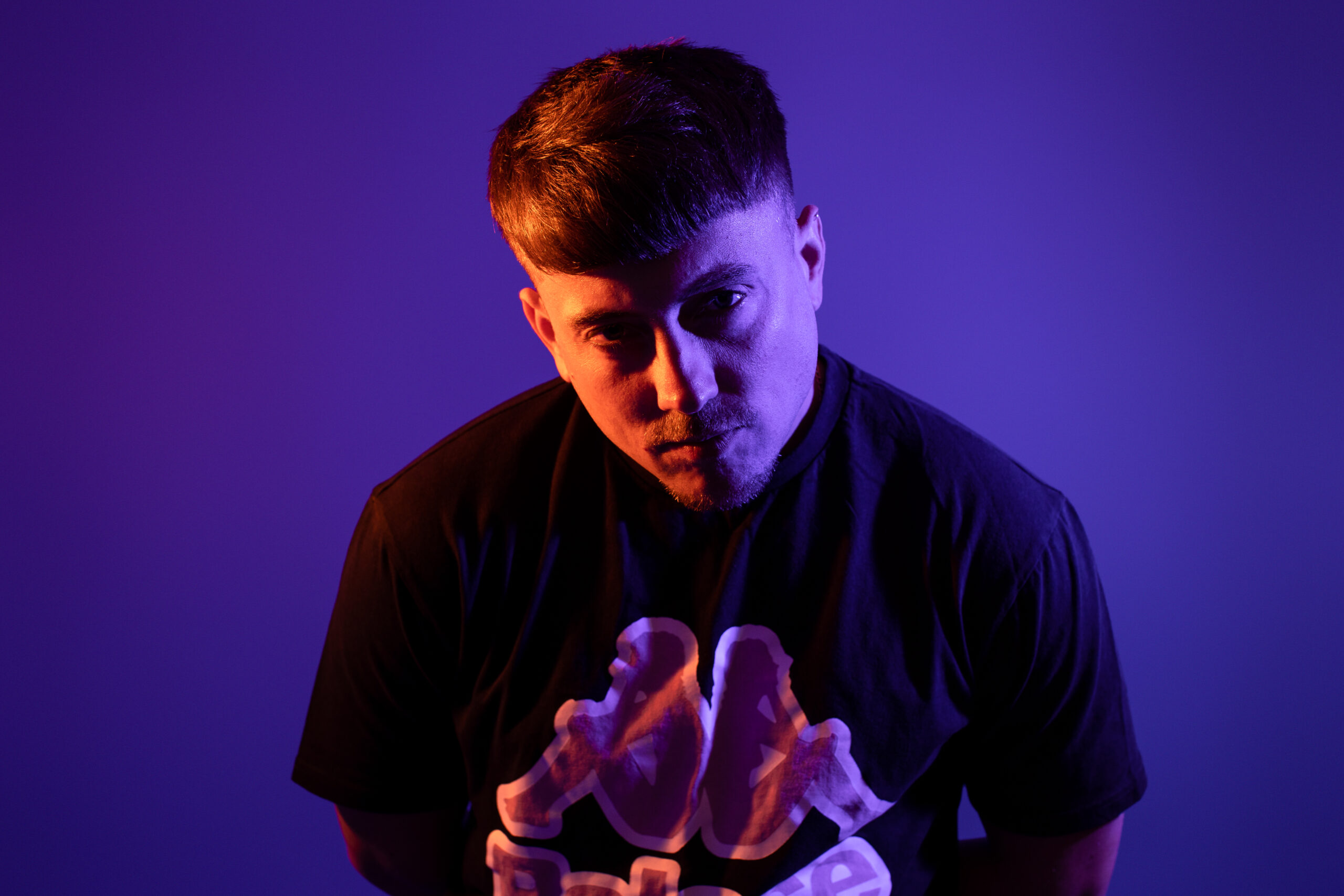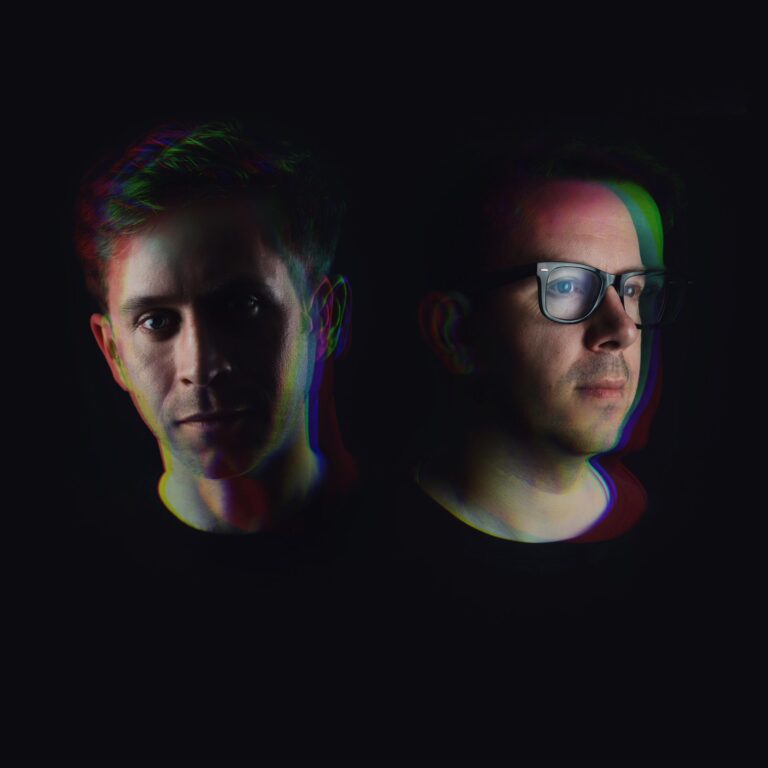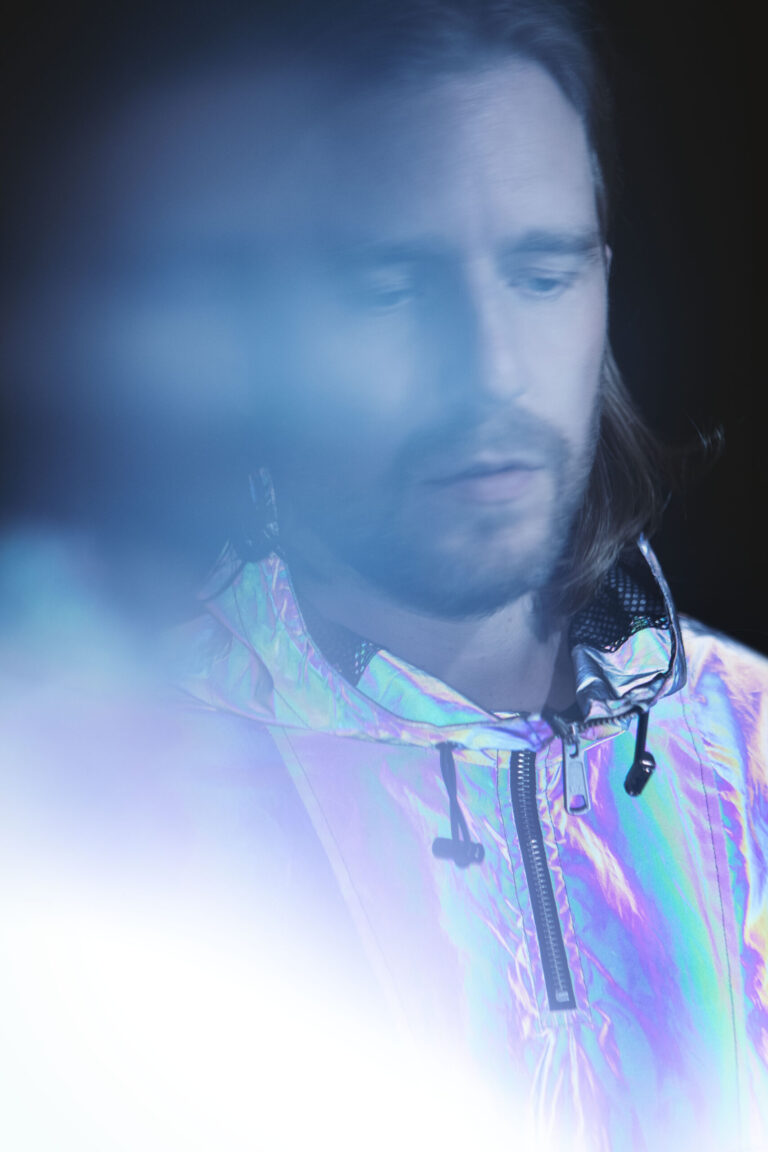Axel Boy first burst onto the scene in 2014 with his Most Additive dubstep release ‘Do You Need It/Out Of Love’, and it was clear from the outset that this was a producer with wide-reaching influences. Over the years we’ve seen Axel Boy become a firm favourite within the mammoth US dubstep scene but also make waves in the British-based bassline scene and more recently the drum and bass scene. If a common thread could be drawn from his genre-hoping back catalogue, it would be his ability to combine the uplifting euphoria of the US scene with the grittiness of the UK, creating an interesting and somewhat illusive balance.
We have a chat with Axle Boy about his workflow while flipping through BPMs, Bath’s hidden grime scene and the pressures of needing to perform on social media.
How are you?
Yeah, not too bad. I’ve been absolutely grinding away the last six, seven months. Working on new music of all different styles, in the studio creating a lot. I’ve had a couple of cool shows this year but mostly just been creating, which is what I’m most comfortable with doing really obviously. I love DJing but I’m more of a producer, really. That’s what I got into this game for.
Some people start as more of a DJ and then move into the production stuff, that was definitely the other way around for me really. I’m just doing what I’ve done for the last 12 years, making music on a computer, just grinding.
How did you decide I’m gonna make music and that’s gonna be my career?
I was actually doing performing arts at Bath College and growing up I was always listening to electronic music, my first real experience of bass was when my dad bought me a hi-fi, which had a subwoofer on it, I listened to a Shy-FX ‘Original Nutta’, that fat 808 bass came in. That music was inspirational to me, early drum and bass. I say early, it’s probably not that early in the grand scheme of d&b, but early for me, the mid-2000 stuff, DJ Hype, DJ Zinc, those boys.
I was doing the performing arts stuff and then at lunchtimes I’d go and hang out with the music students in the music studios. I’ve always loved playing guitar and singing and stuff growing up, but I never had any idea about making music up until that point. I was really into the dubstep that was coming through and was into grime music. I tried playing around with rapping then, I thought I’m probably never gonna be a rapper, but I could make beats. I moved into the dance music spectrum because there were all these different whirlwinds of inspiration. I landed on dubstep stuff and said ‘You know what, this is what I’m gonna I’m gonna do’. So I’ve been following that journey since I was 19.
What was the grime scene like in Bath and Bristol?
I don’t really know any massive grime rappers from this area to be honest. Most of them were from London or from the North when I was growing up. There’s a lot of influence from the culture and for sure, like people always being together spitting. We used to get a lot of artists come down to perform in Bristol, P money people like that. It was never on the level that it was in London or Manchester. I was that kid watching SBTV. I think that being in Bristol definitely nourished my understanding and love for bass music. There’s a big dancehall and sound system culture in Bristol.
When we talk about the dubstep, grime and drum and bass scene back in the day they were quite intrinsic…
Yeah, they were. I used to go to raves in Bristol and there would be a drum and bass room and a dubstep room no matter what. The grime MCs would come down and mostly perform in the dubstep room. It was a really fun time back then, having these different avenues of bass in one space. I used to go to Motion in Bristol a lot, which is one of the biggest clubs and there was always just so much variety, drum and bass and dubstep are not so far away from each other, they used to go hand in hand. Whereas nowadays it feels like the bass music scene is a little more divided in terms of genres, you don’t really see that many different genres on one lineup.
The bassline sound is chilling a little bit more these days, drum and bass is popping off as it has been for a while. I’m not trying to be negative, but it does feel like a tougher time for dubstep and bassline. A bit of a downward trend after the massive wave bassline had over the last five or six years- dubstep in the early 2010’s.
Your tracks span a lot of genres, how do you flick between different genres when you’re working?
I’ll set the tempo and then come up with some different ideas of things most of the time, starting with some mad basslines or getting that melody and riff down. It’s whatever I’m inspired by at the time. I like to listen to and follow all sorts of genres. I’ve just wanted to explore multiple different genres throughout my journey, it all depends on what I’m feeling at the time. It does make it tough because this project’s not necessarily in a particular niche. I started out mostly named for the Dubstep stuff and then moved into a lot of the bass house and bassline stuff, but I was still doing the dubstep stuff as well and that fed into my bassline sound. So it’s a bit different to a lot of other people’s sounds. Over the last year or two, I’ve been exploring drum and bass.
I didn’t want to produce drum and bass too much because it’s one of the genres that I really enjoy listening to. Often when you start to create a sound or explore a genre a lot… I don’t want to say it takes away a bit of magic but, you listen to the music in a different way sometimes. The last couple of years, after lockdown stuff. I just wanted to explore my creativity and that 170 bpm tempo. Recently I’ve been diving back into a bit more of the 140, 145 stuff, inspired by Skrillex’s new album, for instance, he’s got a tune on there with Joker and Sleepnet, and it’s got drill influence to it within dubstep. I find that really inspiring, finding different waves within different sounds.
I was really interested in your workflow because I was listening to your music on the train on the way to work this morning. Everyone around me was sleepy and I was getting so hyped up. How do you get into the mindset to make such high-energy music at two o’clock in the afternoon?
Melodies are a massive part of it for me, it starts with getting down that catchy melody, then you can build up around that. You might want to use it as part of the intro, you might want to use it as the main drop, or something like that. That’s why I enjoy making a lot of bassline stuff because the basslines are melodic, whereas like in a lot of other genres, the basslines are simple. So I’ll just nail down a really nice melody that keeps my dopamine levels high. And I’m like “Right, this isn’t getting boring so I’m gonna build something around this.”
A lot of time you start with the general idea for the drop of a tune, and then you’ll build backwards or I’ll do the other way around and start with a big intro. Generally, it’s nice chords or melodies that are a huge factor of my music. I used to listen to a lot of happy hardcore l when I was growing up, it’s full of big like uplifting chord progressions. I think that’s why I really got into the brostep sound as well because it was a bit of a mix between the madness, the crazy drops and the epic intros and uplifting sounds.
But sometimes there are definitely times when I’m making a track and it’s too much energy for an afternoon in the studio. At times it will be hard to churn out those epic vibes every time, so I’ll create something a bit more stripped back. Being from Bristol, I love that dancehall, sound system, dub sound. So I’ve been making a bit of dubstep recently, which is throwing it back to that old-school vibe inspired by reggae, with lots of skanks and Rasta vocal samples, chucking that into some old-school sound designs. It’s inspired by the Coki sound and all the original dubstep.
When I listen to your music I can hear the American energy but with the grittiness of the UK, there’s a great balance between the two.
With the bassline stuff that I was making over the last few years, I was trying to capture that. I loved the American sound as well, up until the point where it got a little bit head-banging, I was massively into the earlier American dubstep sound as well, so I was trying to incorporate both of those sounds together.
Oh, so it’s intentional?
Yeah, definitely. I was trying to bring in that epic, euphoric, uplifting intro vibe which I was doing a lot in my dubstep tracks. As the brostep stuff was coming through, I hate that word but people know what I mean, I consciously was trying to capture that balance.
I like the bassline template, the 130 bpm 4×4 beats, but then really trying to tune in on this euphoric interest. The sound design for the drops would definitely be much more inspired by the UK sound, harmonic warm wobbles, and cool melodies. That was definitely my vibe for a good few years and it still is my vibe, but I’ve been on a bit of a 170 wave over the last year or so. With the stuff I’ve got forthcoming, I’ve still got lots of dubstep, a bit of uplifting stuff and the baseline stuff. So this project’s always been a bit of a mismatch really, which is fun but it does make it tough to be categorised in a niche. If the music I made was all the same genre it would be easier, but at the same time, I don’t feel like I’d be able to do it.
I can see that, how does it work with club bookings?
I think it makes it tough because one minute you’re right one wave and then you come out with a different vibe and people are like “What is this?”. But at the end of the day, it’s all staying in the bass music spectrum, and I feel now more than I ever have. I gave up on the whole genre thing years ago. Most of my real fans have been around for all the different sounds that I’ve churned out, but yeah it makes it hard for bookings because agents don’t necessarily want to take a punt on a multi-genre artist because it might be more of a drum and bass show.
When you’re playing out, do you take the show into account, do you read the crowd or do you prefer to plan your sets?
I do plan my sets but I am a crowd reader as well, but I do plan because it will depend mostly on where I’m playing. If I’m playing in the UK, I’ll play a fair few more UK vibes, I won’t necessarily play as much dubstep stuff and I’d probably play a fair bit more d&b than in Europe. But then, I can drop a few more of the more American-sounding tunes and they’ll go down well in Europe, because they’re quite intertwined with both the UK and the US. And then whenever I’m in the US I’ll play more dubstep, and more of that like abrasive high-frequency sound.
I always try to play at least two genres. I’ll play maybe the baseline followed by drum & bass or into bassline into 140, 145 then up to drum and bass. That’s the way my sets work, they rise in tempo, which is fun. Sometimes I’ll dip back down and then go back up again, but generally, they’re like rising up in tempo. It’s easy to pull a set together in that way. You have to get your tempo transitions nailed. It’s always fun to explore the ways that I’m going to actually make the tempo change, sometimes I’m just winging it but maybe I’ll loop a section of a tune. What I quite like to do is to take a bassline tune and then find some dubstep remix and then loop part of the vocal and then l slowly raise the tempo into the next one so it sounds like the tune is the same tune just transitioning.
Do you have a favourite place to play?
I love London, definitely, the place where I play more than anywhere. It’s surprising being from Bristol that I don’t actually play that much in Bristol, it’s definitely more of a drum and bass city. But yeah, London’s great. I love the US as well. Something about the US, and my project was definitely more relevant there before it was here until I started releasing more of my bassline stuff.
I wasn’t a no-name in the UK before, but I was pretty much mostly just touring in the US and Europe. It’s been a weird journey. There are a lot of artists I know from the UK that are just smashing it and they can make great drum and bass, but they’re mostly known for dubstep. And that means that most of their followers are out in the US nowadays. It’s a shame I just wish the UK could have another dubstep resurgence.
I think it’s coming…
I hope so just because I feel like it’s a whole wave that people will miss from now on. You don’t have to do the headbang stuff, the heavy stuff is not necessarily for everyone. But look at drum and bass, you’ve got liquid, neuro, jump up, all these different genres and people know what they’re getting. People could hate jump up but love liquid, or the other way round. Why can’t we treat dubstep the same way? It’s a whole genre that you can find grooves and rhythms in.
I hope it has another wave because again, I feel like the UK-based bassline stuff has tailed off at the moment. Dubstep obviously has not been relevant for years here, drum and bass seems to be the only thing standing now. I’ve got 14 tunes, which I’m hoping to get out soon. I’ll be looking forward to showing people what I’ve been making, it’s been a while since I’ve released anything like that. But it’s my roots.
When are the tracks coming out?
My first ‘Dubstep’ release in a long time will be in July. I’m talking to a few labels now, trying to figure out the best avenues to release the rest of the tunes. I might do an EP or some singles. The tunes are there, when the time is right, people will hear them.
So what have you got coming up that we can look forward to?
I have a few amazing festival slots that I’m going to be announcing soon! I also have a brand new record releasing at the end of May. It’s an uplifting, dancefloor drum and bass tune with a re-recorded vocal from a classic house tune, can’t wait for people to hear it!. I also do a Patreon, where I do a lot of educational stuff with other producers. Teaching, producing, providing sounds and stuff and generally helping people along their journey, which keeps me busy. People can just get sounds, or I’ll do feedback for them. I can offer mastering services or one-on-one with people, which is the highest tier.
It’s busy. I’m juggling the Patreon, making my own music and then preparing for shows. It’s not like I’m just cruising and making a living off of just playing shows, it’s not easy to do all of it together, it makes it a full-time job.
What should we be talking about in our scene, that we’re not talking about
Mental health is a big thing but I feel like that is getting talked about a lot more and more. It’s not easy, people might think that an artist’s life is so dandy and they’re just smashing the parties, But it really is a struggle. I think we need more consideration and respect for artists and what they go through to actually get this stuff over the line. We live in a day and age where the TikTok culture, short attention spans, and throwaway culture is the norm. But we just have to cut artists a bit of slack really, and just know that it’s a tough industry to navigate these days. We live in that throw-away culture, it never used to be like that when I was coming up, it was much more simple. Still hard, never easy but…
It must be hard to always be accessible, always switched on….
Exactly. The number of artists I’ve talked to and they’re like “I never signed up to be a content creator for TikTok” But life and careers are about adapting and staying versatile, so I am consciously working hard to up that level of my game!
So please just stream your favourite artist’s music as much as possible. Share your favourite artist’s music is much possible. Go to their shows, and support any way you can.


